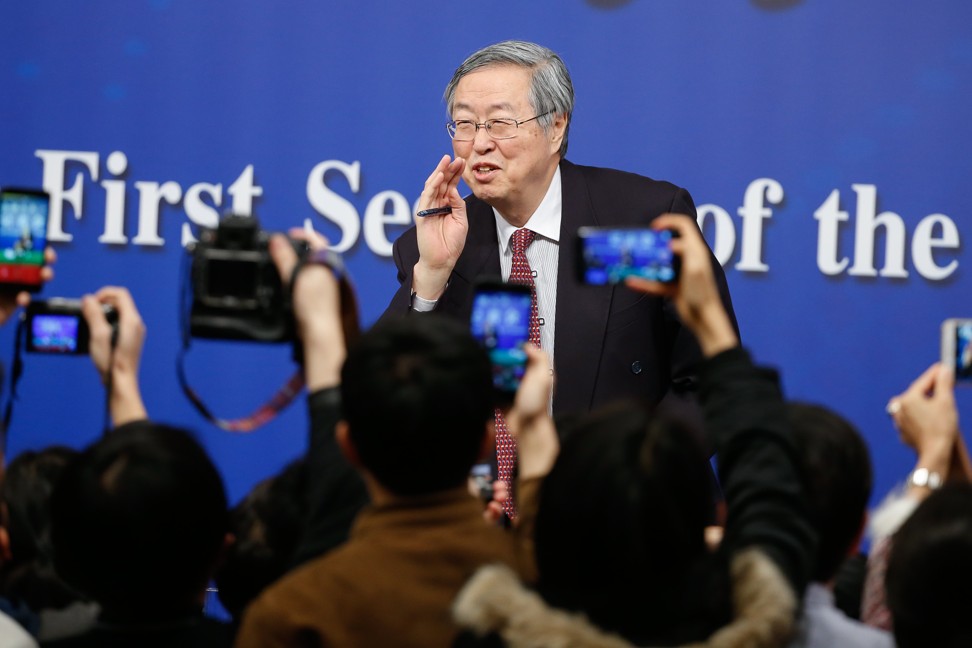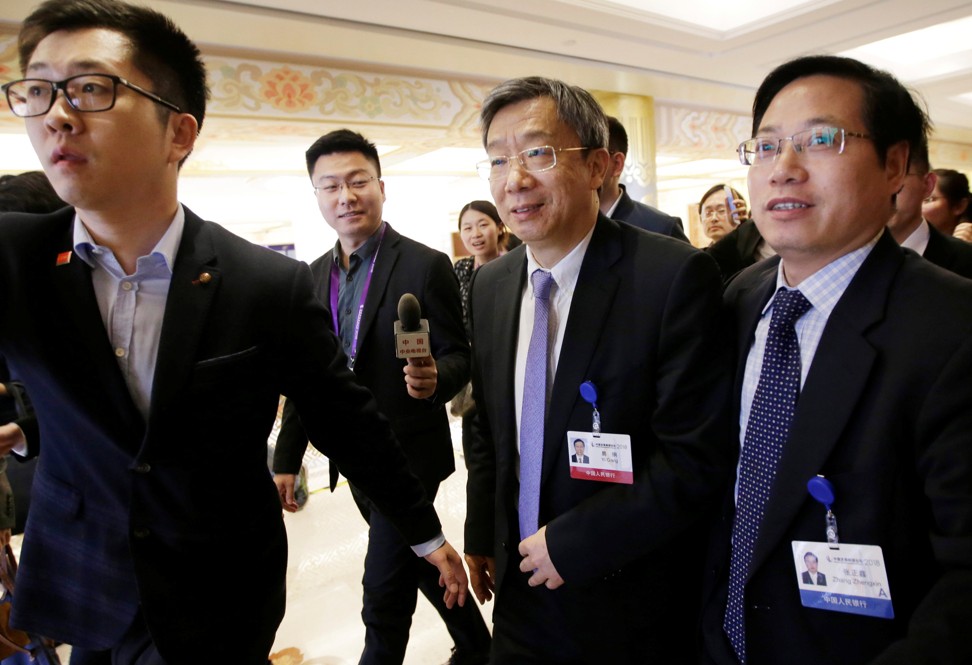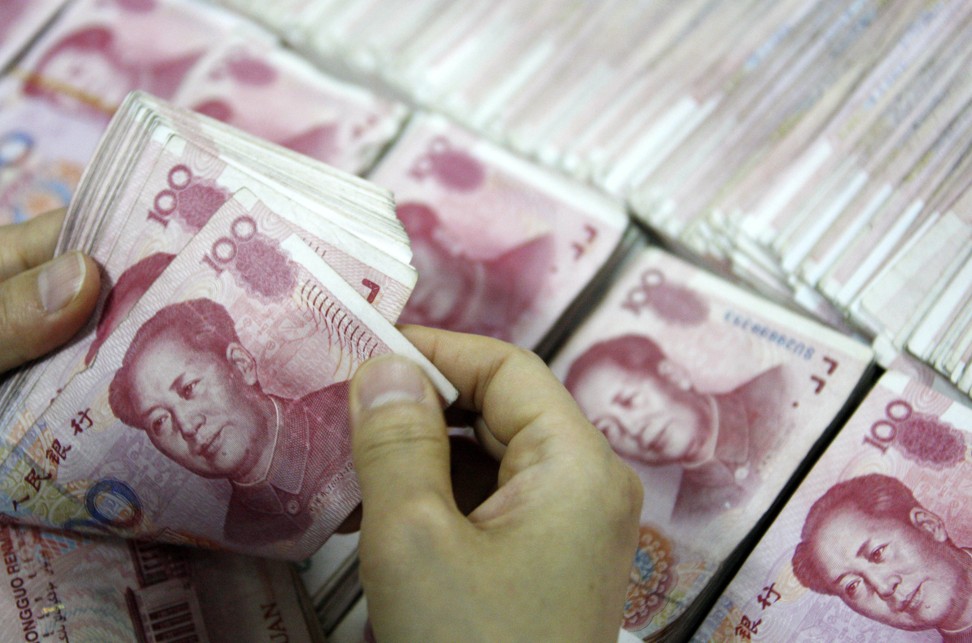
What’s changing at China’s central bank under its new leadership?
Change at the top could herald fresh approach to monetary policy
The new leadership team at China’s central bank may be starting the long overdue process of fixing monetary policy problems and taking a fresh approach to balancing growth and risk control.
Intensive changes have been seen within the People’s Bank of China in recent weeks since Yi Gang replaced Zhou Xiaochuan as governor and Guo Shuqing was installed as party boss.
The central bank has released a timetable for opening up to foreign investors, allowed banks to offer higher deposit rates to end “a dual-track” interest rate system, and tweaked the yuan exchange rate formation mechanism.
In a statement, the central bank denied it had changed its monetary policy, saying that 900 billion yuan of the released funds would be used to repay maturing medium-term lending facilities.
However, it is still a strong signal that the new central bank leadership is ready to restart work that had been halted or even reversed since the stock market rout in 2015.

Louis Kuijs, chief Asia economist at Oxford Economics, said the cut could be owing to a belated response to the changing situation on the balance of international payments from 2013 and the ratio “doesn’t need to be that high”.
The reserve ratio, which is roughly 16 per cent and is much higher than that seen in developed economies, had locked up trillions of yuan as the authorities tightened the supply of credit in its deleveraging and de-risking campaign.
The aggregate financing scale in the first quarter was only 5.58 trillion yuan, a decrease of 1.33 trillion yuan from a year earlier, as Beijing tried to squeeze shadow banking activities.
Despite the government rhetoric, Kuijs said “the considerations behind the move are different from that in the past” and the changes are “in the right direction”.
“In the traditional way of doing monetary policy in China, on the one hand, the central bank imposed a very high requirement ratio on banks and then they gave out loans ... It’s very interventionist and very micromanaging,” he said.
“It would be very welcome if this moves to a more level playing field ... rather than micromanaging monetary policy in China. ”

Previously, the central bank had refrained from cutting the reserve requirement ratio as it was regarded as a signal of easing.
In the last few years of former governor Zhou’s tenure, market liquidity had largely been added through open market operations and a variety of unique tools such as short-term lending facilities and pledged supplement loans.
Yi, 60, was widely praised for his understanding of the country’s financial system as he climbed the ladder from the deputy general director of monetary policy committee to the top position of the central bank.
On the other hand, he is known to be familiar with international practice after studying for a PhD in economics from the University of Illinois and working as an academic at the University of Indiana.

“The new governor has a different working style,” said Shen Jianguang, chief economist at Mizuho Securities Asia.
However, Shen added that the central bank could receive all the credit for the shift as it is part of the Chinese cabinet and is not as independent as its counterparts in the US or Europe.
Yi was assigned to oversee the daily operations of the PBOC, while reform and party-related issues are under the jurisdiction of Guo, who is also head of the newly established China Banking and Insurance Regulatory Commission.
Above it is the newly chartered Financial Stability and Development Commission, which is expected to be led by Vice-Premier Liu He, and all major decisions will be finalised at the Central Financial and Economic Commission headed by President Xi Jinping.
“It’s also hard to know if they will take a new approach or continue slashing the reserve ratio. But we do see policy implementation has been greatly strengthened since the party congress last year,” Shen said.
E Yongjian, a senior researcher with the Bank of Communications, said further observations were needed. “The RRR cut is more of a way to optimise the use of liquidity adjustment tools. It is set to ensure a smooth transition as strong financial regulation continues,” he said.
Yi, speaking at Boao Forum earlier this month, emphasised support for the real economy and distanced the Chinese stance from the monetary policy of the US Federal Reserve, which has kept raising interest rates following the bout of quantitative easing that followed the 2008 financial crisis.
However, analysts believe that China has a good opportunity to proceed with some reforms – such as the relaxation of capital controls, the yuan exchange rate or interest rates – as the domestic economy is still growing and cross-border capital flows have been stabilised.

The State Administration of Foreign Exchange (SAFE) is ready to allow more capital outflows through such measures as renewing the quota approval for qualified domestic institutional investors (QDII), which has been suspended for three years.
“We will also steadily promote yuan convertibility in capital accounts,” SAFE spokeswoman Wang Chunying told a media briefing on Thursday.
Meanwhile, a more market-oriented interest rate mechanism could be the next target.
As a response to the rate rises from the US, the central bank has raised interbank policy rates by five or 10 points each time since last year, further widening the gap with the benchmark interest rate, which has been unchanged at 1.5 per cent for a one-year term deposit since 2014.
A further relaxation of the deposit rate ceiling, which is now capped at a 30 per cent premium, is widely expected to narrow the gap with money market rates.
“As part of the interest rate liberation, the relaxation of the current 30 per cent deposit ceiling will be one of the paths leading to rate hikes in the second half of this year,” said Robin Xing, chief China economist at Morgan Stanley.
“The moderate interest rate rise will help deal with the off-balance banking activities and prevent deposits flowing out of the banking system,” Xing said.

